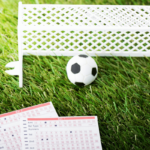Choosing the right soccer cleats can significantly impact your game, whether you’re a seasoned player or just starting out. With an overwhelming array of options in terms of brands, materials, and designs, it’s crucial to find the perfect pair that aligns with your playing style and needs. In this guide, we’ll navigate the world of soccer cleats, providing you with essential tips and considerations to make an informed decision. Lace up and prepare to discover how to select the best soccer cleats for your football journey.
Understanding Cleat Types and Uses
Choosing the right soccer cleats is crucial for optimizing your performance on the field, ensuring comfort, and minimizing injury risks. Soccer cleats, also known as football boots outside North America, are designed with specific types of fields and playing conditions in mind. The main categories include Firm Ground (FG), Soft Ground (SG), Artificial Grass (AG), Indoor (IN), and Turf (TF) cleats. Each type has unique features tailored to the surface it’s intended for, affecting traction, stability, and your ability to control the ball.
Firm Ground cleats are the most versatile option, suitable for most grass fields. They feature molded studs or blades designed to provide optimal traction on natural grass surfaces that are hard or slightly wet. Soft Ground cleats, on the other hand, are ideal for wet, muddy conditions, featuring fewer, but longer, removable studs that can be adjusted based on field conditions. Artificial Grass cleats have numerous short studs and are designed to mimic the feeling of playing on natural grass while reducing the heightened risk of injuries on synthetic surfaces. Indoor shoes typically have a flat outsole made of rubber, offering maximum grip on indoor court surfaces, while Turf shoes have small rubber studs or patterns for use on artificial turf or very hard outdoor surfaces.
Choosing the right cleat type goes beyond just matching the shoe to the playing surface; it’s also about enhancing your play style. For example, players seeking speed may prefer lightweight FG cleats, whereas those looking for better control might opt for AG cleats with enhanced grip.
| Type | Surface | Feature |
|---|---|---|
| Firm Ground (FG) | Natural grass | Molded studs for traction |
| Soft Ground (SG) | Wet, muddy grass | Removable studs for adjustability |
| Artificial Grass (AG) | Synthetic grass | Short studs for reduced injury risk |
| Indoor (IN) | Indoor courts | Flat, rubber outsole for grip |
| Turf (TF) | Artificial turf/hard surface | Small rubber studs for traction |
Understanding the differences between each type of soccer cleat and their intended uses is the first step in selecting the right pair. It’s not just about the feel of the shoe, but also how it aligns with the surfaces you play on and your specific needs as a player. Whether you’re a beginner or a seasoned player, taking the time to choose the right cleats can significantly impact your game and help prevent injuries.
Analyzing Your Playing Surface
Understanding the surface you play on is crucial in selecting the right soccer cleats. Different pitches demand specific types of soles to maximize performance and reduce injury risk. Grass fields, for instance, can vary from soft and muddy to hard and dry, each requiring a different cleat design. Artificial turf, on the other hand, often benefits from shorter studs to prevent too much grip, which can lead to injuries. Indoor surfaces or flat concrete for street soccer demand a flat sole, prioritizing control and maneuverability over grip. By analyzing your primary playing surface, you make an informed decision that enhances your gameplay and protects your well-being.
It’s also important to consider the weather conditions you frequently play in. Wet, muddy fields will necessitate cleats with longer studs for better traction, often found in models categorized for soft ground. Conversely, dry, hard pitches are best played in cleats with shorter, more densely packed studs or even turf shoes, designed to distribute pressure evenly across the foot. Transitioning between different surfaces, such as moving from outdoor to indoor soccer in the winter, may require having multiple pairs of cleats to suit each playing environment adequately.
| Surface Type | Recommended Cleat Type | Key Characteristics |
|---|---|---|
| Soft/Wet Grass | Soft Ground Cleats | Long, metal studs for enhanced grip |
| Hard/Dry Grass | Firm Ground Cleats | Shorter, plastic studs for stability |
| Artificial Turf | Turf Shoes | Small, rubber studs or patterns for grip |
| Indoor Surfaces | Indoor Cleats | Flat sole for maximum surface contact |
| Street/Concrete | Street Soccer Shoes | Flat, durable sole for wear resistance |
Ultimately, the key to choosing the right soccer cleats lies in a thorough analysis of the surfaces you play on the most. This strategic approach not only enhances your performance but also significantly lowers the risk of injury, ensuring that you can enjoy the game to its fullest. Remember, the perfect cleat is the one that fits both your foot and your field.
Importance of Proper Fit
Finding the right fit in soccer cleats is paramount for any player, regardless of skill level or position on the field. A properly fitting pair of cleats ensures not only comfort during play but also enhances performance and reduces the risk of injury. When your cleats fit well, they allow for optimal control of the ball, enabling precise dribbling, passing, and shooting. Conversely, poorly fitting cleats can lead to blisters, calluses, and other foot ailments that can sideline a player or significantly impair their ability to play.
Moreover, the correct fit contributes to better stability and support on the field. Soccer involves rapid changes in direction, high-speed runs, and sudden stops. A soccer cleat that fits well will securely anchor your foot, providing the necessary support to accommodate these dynamic movements without slipping or causing discomfort. This stability is crucial in preventing ankle and foot injuries, which are common in the sport. Additionally, the right fit affects the longevity of the cleat, ensuring that the material does not stretch or wear out prematurely due to improper use.
It’s also important to consider that each brand and model of soccer cleat can have a slightly different fit due to variations in design and materials used. Therefore, it’s advisable to try on multiple options and perform some basic movements or even a short run when possible. Pay attention to areas prone to pressure points or excess movement, and ensure there is a snug, but not tight, fit throughout the foot.
- Measure your feet regularly, as their size and shape can change over time.
- Consider the type of socks you will be wearing with your cleats.
- Take into account the width of your feet, not just the length.
- Try on cleats at the end of the day when your feet are at their largest.
- Ensure there’s a little space (about a thumb’s width) between your toes and the front of the cleats.
Cleat Material Considerations
Choosing the right soccer cleats is crucial for enhancing performance, comfort, and durability on the field. Among the myriad factors to consider, the material of the cleat plays a pivotal role in the overall experience of the player. Traditionally, soccer cleats were crafted from genuine leather, offering a remarkable blend of flexibility and durability. However, the evolution of sports technology has introduced a variety of synthetic materials, each with its unique benefits. Understanding the distinctions between these materials, as well as their advantages and disadvantages, is essential for making an informed decision tailored to your personal needs and playing style.
Leather cleats, such as those made from kangaroo or calf skin, are highly prized for their softness and ability to conform to the foot, providing an exceptional touch and feel for the ball. Leather also offers superior breathability, which can significantly enhance comfort during play. Nonetheless, leather cleats may require more maintenance than their synthetic counterparts and can be less durable in wet conditions unless treated with waterproofing agents. On the other hand, synthetic materials are famed for their resilience and ability to withstand harsh playing conditions. They are often lighter than leather, contributing to faster movement on the field. Synthetics can also be engineered to provide specific performance benefits, such as improved ball control or enhanced grip on the playing surface.
For players torn between the natural touch of leather and the innovative features of synthetics, a hybrid approach may provide the perfect solution. Some modern cleats feature a combination of materials, leveraging the strengths of each to offer a balanced performance. Players should consider not only the material but also factors such as the type of playing surface (grass or artificial turf), weather conditions, and personal preferences in fit and feel. Ultimately, the right cleat material will support your playing style, maximize your comfort, and contribute to your success on the field.
- Genuine leather for flexibility and natural touch
- Synthetic materials for durability and weather resistance
- Hybrid cleats combining leather and synthetic for balanced performance
- Consideration of playing surface and weather conditions
- Personal preference in fit, feel, and overall comfort
When deliberating on cleat material considerations, it’s invaluable to gain additional insights and context. The choice between leather and synthetic materials extends beyond mere personal preference; it encapsulates a player’s adaptation to their environment, playing style, and the physical demands of the game. For instance, defenders may prioritize durability and protection, opting for thicker, more resilient materials, while midfielders and forwards might lean towards lightweight cleats that enhance speed and ball control. Moreover, advancements in material technology have led to the development of eco-friendly and vegan options, catering to the growing demand for sustainable sporting goods. As the soccer landscape continues to evolve, so too do the materials from which cleats are constructed, each offering unique benefits designed to elevate the game.
Budget and Brand Preferences
When choosing soccer cleats, your budget and brand preferences play a pivotal role in determining the right fit for you. It’s essential to establish a budget early on, as this will guide you in filtering your options without compromising on quality. Soccer cleats are available in a wide price range, catering to casual players and competitive athletes alike. Brands like Nike, Adidas, and Puma offer options at various price points, each with their unique features and technologies designed to enhance performance on the field. However, it’s important to remember that a higher price does not always guarantee a better shoe. Focus on finding cleats that offer the best value for your money, considering durability, comfort, and the type of technology that suits your play style.
While brand loyalty can influence your decision, be open to exploring different brands as they might offer features that better meet your needs. Each brand has its strengths – for example, Nike might be known for innovative technologies, Adidas for comfort and design, and Puma for affordability and durability. Ultimately, the right brand for you will offer cleats that align with your playing conditions, foot shape, and personal style. It’s also worthwhile to try on different brands and models to compare how they fit and feel on your feet, as this can significantly impact your game.
Understanding the Value of Soccer Cleats
When delving deeper into budget and brand preferences, it’s crucial to consider the value that a pair of soccer cleats offers beyond the price tag. This includes evaluating how well they meet your specific needs, such as the type of pitches you play on, the level of competition you’re involved in, and any foot conditions you might have. Ensuring that your cleats are a good match for these factors can enhance your performance and prevent injuries, making them a worthwhile investment.
- Establish your budget and stick to it to avoid overspending.
- Research and compare different brands and their offerings within your price range.
- Consider the cleats’ features, such as material, sole type, and technology, and how they match your playing style.
- Try on multiple pairs to find the best fit and comfort level for your feet.
- Read reviews from other players to gauge the durability and performance of the cleats you’re interested in.
In conclusion, selecting the right soccer cleats involves a careful balance of budget, brand preferences, and personal needs. By taking the time to research and try on different options, you can find a pair that not only fits your budget but also enhances your performance on the field. Remember, the best cleats for you are those that meet your specific requirements, allowing you to play your best game.







